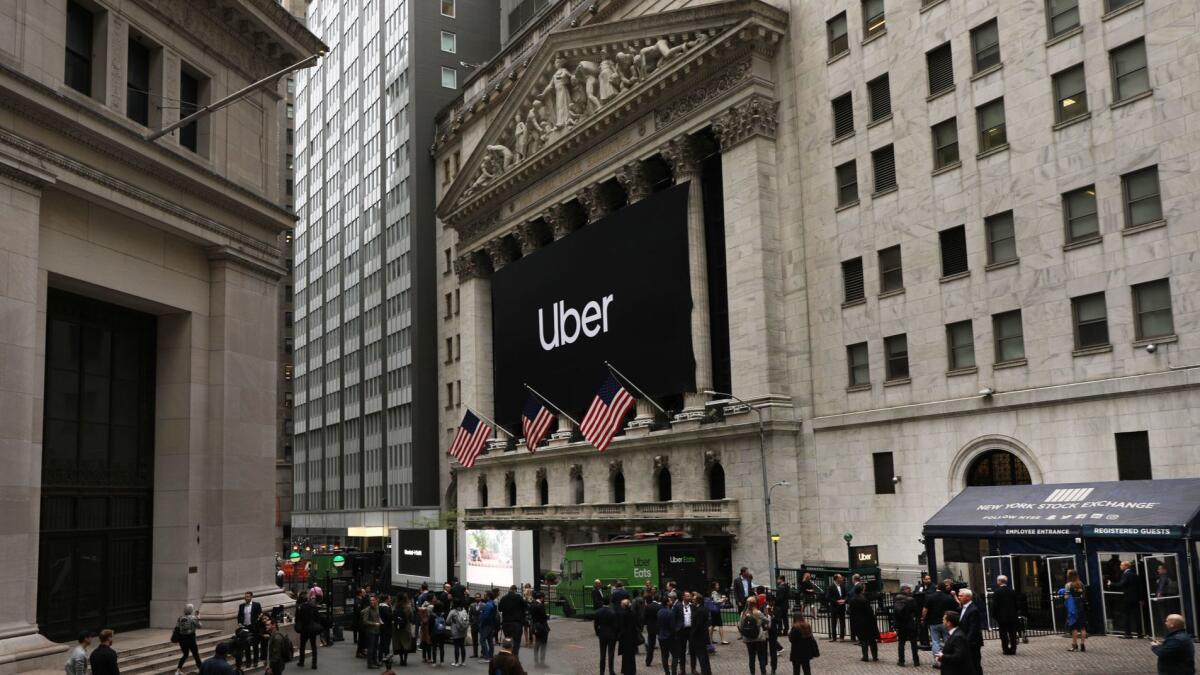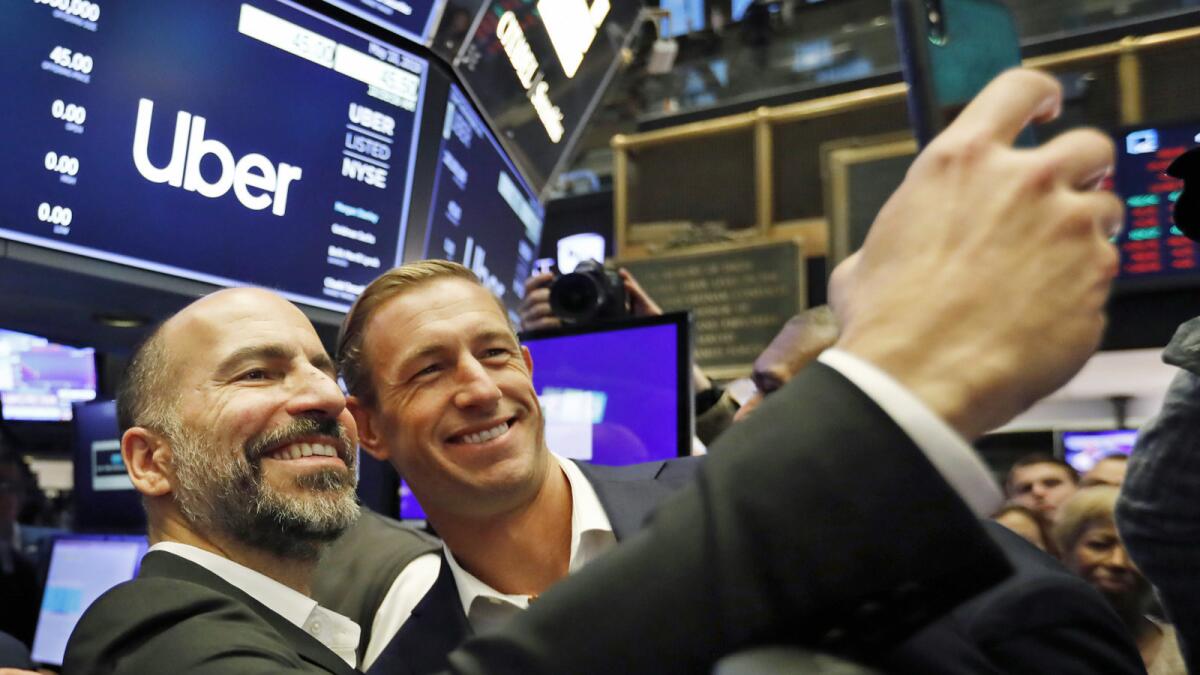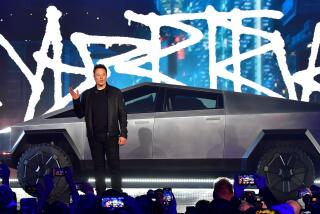Uber fares are cheap, thanks to venture capital. But is that free ride ending?

The 2010s have been the decade of the subsidized ride.
Uber and Lyft duked it out on the streets of American cities, burning mountains of venture capital to keep fares low in the hopes of winning the battle for market share. The costs were steep: Lyft lost nearly $1 billion in 2018; Uber, with its global scale and broader ambition, lost $3 billion.
The private investors that pumped money into these companies were looking for growth at all cost, betting that one of the companies would grow large enough to reach monopoly status or fund the research to invent self-driving cars.
But now that both companies have been listed on stock exchanges, it remains to be seen whether public investors will believe in the same loss-heavy long-term story â or start clamoring for Uber and Lyft to stop the bleeding.
âIn the long run they want to transform transportation, which will take significant investment,â said Reena Aggarwal, professor at Georgetownâs McDonough School of Business. âBut when you become a public company thereâs also a quarter-by-quarter scrutiny that comes with it â itâs great to grow market-share, but eventually people start asking whatâs the bottom line? Where are the profits?â
The quickest way for both companies to inch away from red ink would be to raise fare prices or cut driver pay, increasing whatâs known as the âtake rate,â or the cut of each fare that the company pockets. The company can also decrease incentive packages for drivers, and stop offering coupons to riders, but the effect is similar.
In its regulatory filings in advance of its IPO, Uber said that its take rate for its ride-hailing business was 22% in 2018, up from 21% in the previous year, but noted that it expects that rate to decrease in the near-term.
That would indicate that the company is prioritizing long-term growth over any short-term adjustment, but some local reports seem to show the opposite. Drivers in Los Angeles and cities across the country recently organized a strike in response to the company slashing their per-mile pay by 25%. This week, the San Francisco Chronicle found that Uber was taking an average of 30% of fares.
But true believers think that any emphasis on short-term profitability is shortsighted.

âProfitability in the first three-to-five years is not the focus,â said Daniel Ives, an analyst at Wedbush. âThe focus is on doubling down on growth and further expanding this Uber economy over coming years.â
The company is just getting started, the thinking goes, and its core ride-hailing service, Uber Eats food delivery business and Uber Freight shipping logistics division are poised to take over many times their current market across the world.
âAs someone whoâs covered technology for 20 years, I could count on one hand the stories that are potentially transformational on the consumer enterprise side,â Ives said. âUber has the blueprint to be what I view as the Amazon in transportation.â
Once Uber reaches that world-eating scale, the believers say, it will have such reach into driversâ and ridersâ lives that it can start tightening the economics, and introduce more profitable subscription models or, eventually, self-driving cars, and fend off any competition from other deep-pocketed tech giants.
Ives sees Lyft, which only operates in North America and hews closer to its core ride-hailing product than the expanding Uber, as a less enticing investment precisely because it has said it plans to work to reduce losses.
âA major strategic mistake that Lyft made was putting their back against the wall talking about the path to profitability in the next few years,â Ives said. âUltimately with Uber, either you believe or you donât.â
Some experts in public markets think that investors will be willing to take that leap of faith.
âItâs commonly argued that going public forces companies to be more short-term oriented,â said Larry Harris, professor of finance at the University of Southern Californiaâs Marshall School of Business. âI donât believe that.â
Share prices ultimately reflect long-term value, Harris says, and smart investors know that money myopia can work against seeing the highest return on investment years down the line.
Even with a disappointing pair of IPOs, which saw Uber and Lyft stocks both tumble in value after their debut, both companies are still valued at approximately at $77 billion and $14 billion, respectively. (Lyft debuted at $72 a share at the end of March, but quickly fell and now trades at $51; Uber priced its IPO at $45, but fell to below $42 on the first day of trading.)
Given that the two have never turned a cent of profit, thatâs at least one sign that Wall Street is willing to hold out hope â and riders might still be able to enjoy cheap rides â for at least a little while longer.
Follow me on Twitter: @samaugustdean







